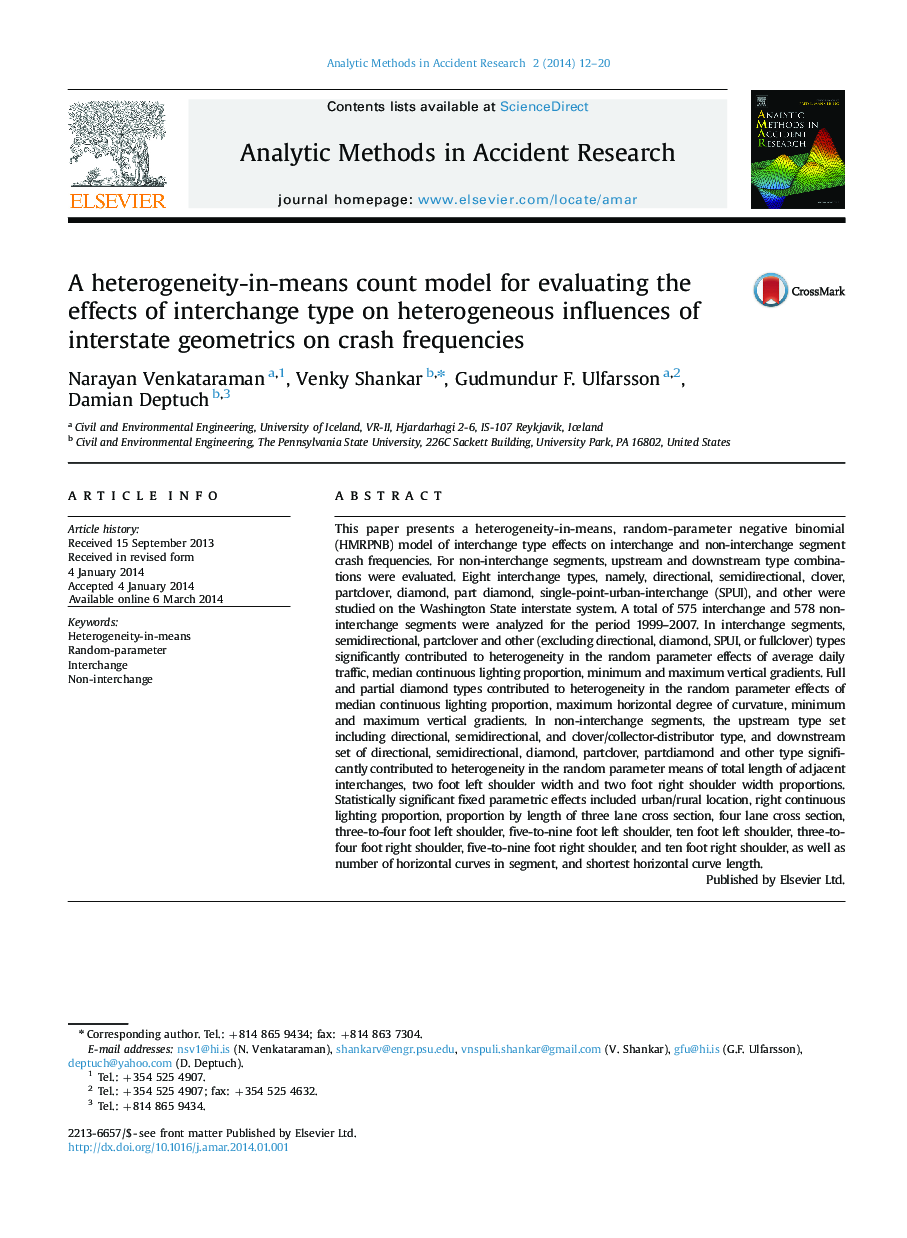| Article ID | Journal | Published Year | Pages | File Type |
|---|---|---|---|---|
| 1104510 | Analytic Methods in Accident Research | 2014 | 9 Pages |
•Present a heterogeneity in means random parameter negative binomial model for Washington State interstates.•Eight major interchange types evaluated for interchange segments.•Non-interchange segments are defined by upstream downstream combinations of interchange types.•Interchange configurations contribute to heterogeneity in geometric random parameters.•Largest footprint (diamond/diamond) contributes to a beneficial effect from a total crash likelihood standpoint.
This paper presents a heterogeneity-in-means, random-parameter negative binomial (HMRPNB) model of interchange type effects on interchange and non-interchange segment crash frequencies. For non-interchange segments, upstream and downstream type combinations were evaluated. Eight interchange types, namely, directional, semidirectional, clover, partclover, diamond, part diamond, single-point-urban-interchange (SPUI), and other were studied on the Washington State interstate system. A total of 575 interchange and 578 non-interchange segments were analyzed for the period 1999–2007. In interchange segments, semidirectional, partclover and other (excluding directional, diamond, SPUI, or fullclover) types significantly contributed to heterogeneity in the random parameter effects of average daily traffic, median continuous lighting proportion, minimum and maximum vertical gradients. Full and partial diamond types contributed to heterogeneity in the random parameter effects of median continuous lighting proportion, maximum horizontal degree of curvature, minimum and maximum vertical gradients. In non-interchange segments, the upstream type set including directional, semidirectional, and clover/collector-distributor type, and downstream set of directional, semidirectional, diamond, partclover, partdiamond and other type significantly contributed to heterogeneity in the random parameter means of total length of adjacent interchanges, two foot left shoulder width and two foot right shoulder width proportions. Statistically significant fixed parametric effects included urban/rural location, right continuous lighting proportion, proportion by length of three lane cross section, four lane cross section, three-to-four foot left shoulder, five-to-nine foot left shoulder, ten foot left shoulder, three-to-four foot right shoulder, five-to-nine foot right shoulder, and ten foot right shoulder, as well as number of horizontal curves in segment, and shortest horizontal curve length.
